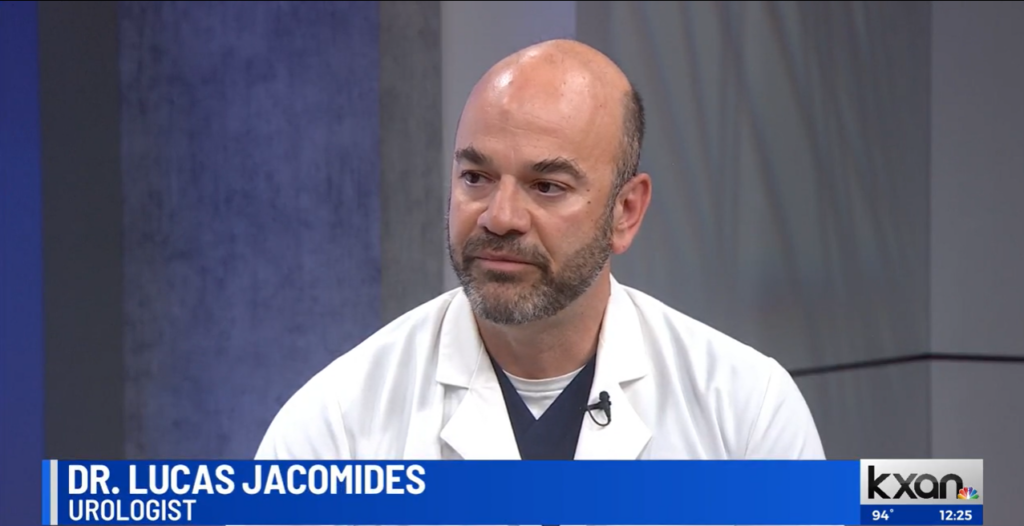
Azoospermia refers to the condition in which no sperm is seen in the ejaculate.
An azoospermia diagnosis requires that two semen analyses be performed separated by at least 1 or 2 weeks and that the specimens be centrifuged so that it can be confirmed under a microscope that no sperm are seen in the ejaculate. Such a finding should prompt immediate referral to a urologist for evaluation. Azoospermia can be an alarming cause of infertility and will require advanced diagnostic procedures.
Azoospermia is classified as either obstructive or nonobstructive.
Obstructive Azoospermia
Obstructive azoospermia refers to a finding of blockage of the travel of sperm from the testicles to where they are deposited in the prostatic urethra. Blockage must occur on both sides. Obstructive azoospermia can be due to congenital anomalies, prior vasectomy, prior hernia surgery, or trauma.
Retrograde ejaculation: Although not technically classified as obstructive azoospermia, some patients will not experience a significant amount of ejaculate but will have sperm and semen travel into the bladder during orgasm. This condition called retrograde ejaculation is experienced by some men with diabetes or a nerve injury and is diagnosed when the urine from such a patient is examined after ejaculation and is found to have sperm. Patients with retrograde ejaculation are still able to have children but oftentimes the sperm needs to be harvested and cleaned and inserted directly into the uterus of the partner, called intrauterine insemination (IUI).
Congenital bilateral absence of the vas deferens (CBAVD): One condition associated with obstructive azoospermia is the congenital bilateral absence of the vas deferens (CBAVD). This is a condition that results from a chromosomal mutation that is also commonly seen in patients with cystic fibrosis. With this condition, the vas deferens cannot be felt in the scrotum, because they did not form, and some patients may present with abnormalities of the epididymis or other areas of the genital tract. A family history of cystic fibrosis and a finding of azoospermia should prompt an evaluation for CBAVD.
It is also possible that a cyst of the prostate can block the passage of sperm into the urinary tract for ejaculation. Finding such a blockage can often be repaired.
Nonobstructive Azoospermia
Nonobstructive azoospermia is often a more complicated condition and suggests that the testicles are not able to produce mature sperm. This condition can be associated with a genetic mutation. By definition, non-obstructive azoospermia does not involve the blockage of the ejaculatory duct system. This condition can be caused by genetic or hormonal factors, but the underlying cause is often not uncovered.
Evaluation of this condition can include a testicular biopsy or testicular mapping procedure and often will include a laboratory panel to include hormone levels. In certain cases, genetic testing for abnormalities of the chromosomes is performed. The diagnosis of nonobstructive azoospermia is suggested when the patient’s follicle-stimulating hormone and luteinizing hormone levels are elevated. Although often a more advanced cause of infertility, many men with nonobstructive azoospermia are still able to father children.
Y chromosome abnormalities in male fertility: Y chromosome abnormalities are a common genetic cause of non-obstructive azoospermia. The Y chromosome determines the male sex in a developing embryo and contains important genes involved in sperm production. There is a particular region of the Y chromosome called the azoospermia determining factor and there are 3 separate mutations that can be found in this region that can significantly impact sperm production.
The AZFa and AZFb mutations are usually associated with no sperm in the ejaculate, or azoospermia, and this condition is generally considered non-recoverable and obtaining sperm from the male partner is impossible. The AZFc mutation, however, can have differing rates of low sperm count and no sperm count. Sperm can be found after a sperm extraction procedure in between 40% and 60% of such patients.
Klinefelter’s Syndrome: Klinefelter’s syndrome is another genetic abnormality associated with non-obstructive azoospermia caused by the presence of an extra X chromosome. These patients can present with long arms small testicles and little to no sperm in the ejaculate. Many times these patients can present for the first time after fertility difficulties.
Klinefelter’s syndrome is diagnosed with a genetic test called a karyotype. Although advanced diagnostic techniques are often necessary, approximately 40% of patients can have sperm found after a microscopic testicular sperm expiration. This sperm may be used in conjunction with IVF to conceive a child.














